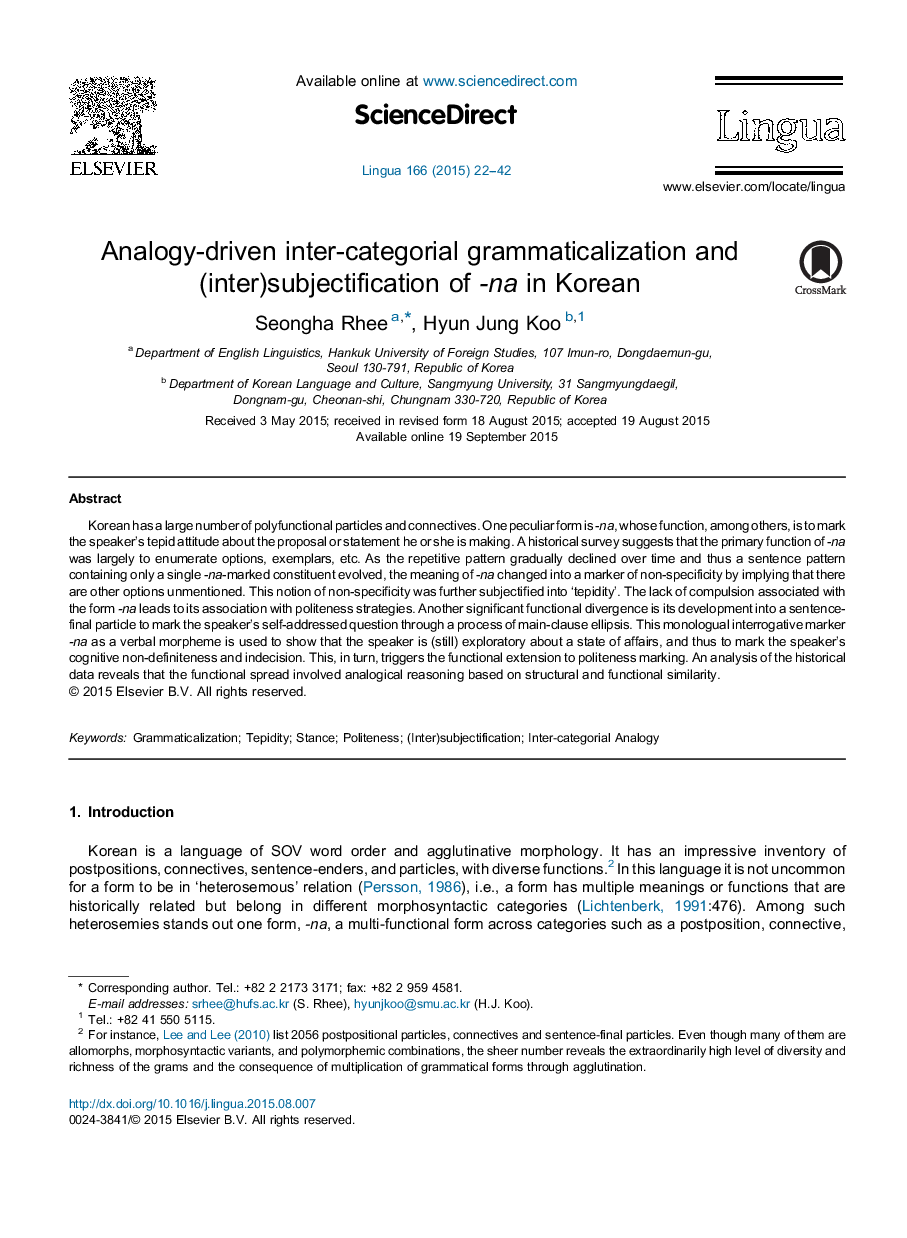| کد مقاله | کد نشریه | سال انتشار | مقاله انگلیسی | نسخه تمام متن |
|---|---|---|---|---|
| 935258 | 923846 | 2015 | 21 صفحه PDF | دانلود رایگان |

• This paper analyzes a polyfunctional grammatical marker, -na, in Korean.
• As a stance marker, -na signals tepidity, politeness, and claim of superiority.
• The tepidity meaning arose from implied multiple-options in the enumeration function.
• Main-clause ellipsis triggered the development of -na as a sentence-final particle.
• Intercategorial polyfunctionality arose through a structural and functional analogy.
Korean has a large number of polyfunctional particles and connectives. One peculiar form is -na, whose function, among others, is to mark the speaker's tepid attitude about the proposal or statement he or she is making. A historical survey suggests that the primary function of -na was largely to enumerate options, exemplars, etc. As the repetitive pattern gradually declined over time and thus a sentence pattern containing only a single -na-marked constituent evolved, the meaning of -na changed into a marker of non-specificity by implying that there are other options unmentioned. This notion of non-specificity was further subjectified into ‘tepidity’. The lack of compulsion associated with the form -na leads to its association with politeness strategies. Another significant functional divergence is its development into a sentence-final particle to mark the speaker's self-addressed question through a process of main-clause ellipsis. This monologual interrogative marker -na as a verbal morpheme is used to show that the speaker is (still) exploratory about a state of affairs, and thus to mark the speaker's cognitive non-definiteness and indecision. This, in turn, triggers the functional extension to politeness marking. An analysis of the historical data reveals that the functional spread involved analogical reasoning based on structural and functional similarity.
Journal: Lingua - Volume 166, Part A, October 2015, Pages 22–42